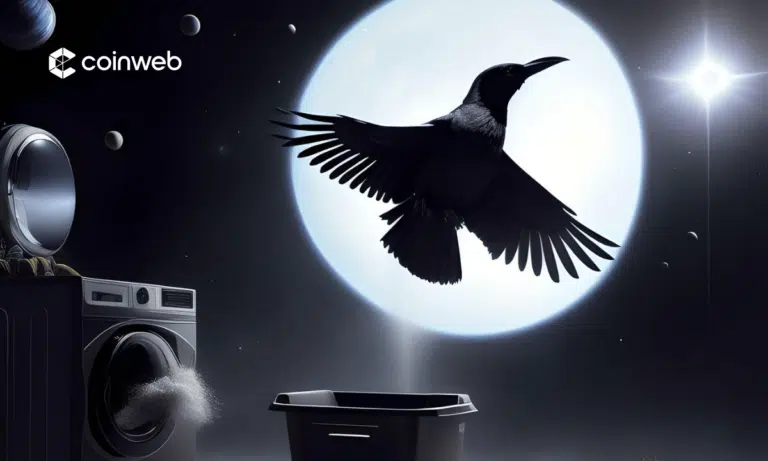TLDR
This guide will inform you about NFTs (Non-Fungible Tokens) and how to invest in this digital asset properly. Investing in NFT requires you to:
- Set up a web3 wallet (MetaMask).
- Connect your bank account or credit card to the wallet.
- Transfer fiat currency (USD, EUR) to the wallet to buy cryptocurrency using suitable crypto exchanges (Binance).
- Connect your wallet to an NFT marketplace.
- Browsing NFT marketplaces to catch up with available NFTs.
- Click on the ‘purchase’ button.
- Get the NFTs stored in your wallet.
You can continue buying and selling the tokens for short-term investments. Also, you may hold the NFTs for some time as a long-term investment. It’s crucial to take a well-balanced approach to make profits from either investment.

Why Invest in NFT?
An NFT is a one-of-a-kind digital asset like art, video, music, and in-game tokens. The most popular use cases of NFTs include digital artworks. However, these assets don’t have any intrinsic value like cryptocurrencies. They’re only valuable as much as customers are willing to pay.
However, buying NFTs can guarantee ownership of a non-fungible asset. Additionally, this ownership provides some extra benefits and perks. NFTs can effectively enable creating and supporting a popular or favorite digital art of digital artists.
That’s why people pay to support NFTs for their favorite digital artists. It’s the same for gaining ownership of the only digital version of unique physical assets. Most investors use this trend of fluctuation-based increase in value for profits. Learn more about how NFT works and its applications.
Step-by-Step Process of NFT Investing
You can invest in NFTs by creating a token or buying one from the online marketplace. You can buy NFTs by using the seven-step guidelines outlined below.
Step One: Create a Cryptocurrency Wallet
You’ll need to set up a crypto wallet (web3) to make all the necessary transactions related to the right investment. Creating a digital wallet is often simple and free (like MetaMask) through your smartphone or PC. These wallets can range from simple apps to complex integrations.
Among all the options, we suggest you start with the MetaMask wallet. You can install MetaMask on your PC and smartphone. It’s the most trusted, used, and compatible software wallet for nearly all crypto transactions.
More details
MetaMask is a popular cryptocurrency wallet famous for its extensive support of Ethereum-based cryptocurrencies and NFTs. Even though it supports multiple blockchain networks, MetaMask does not currently support Bitcoin. It can be a turn-off for investors primarily focused on Bitcoin traders.
-
Easy setup process.
-
Rewards via staking and holding.
-
Supports all of ERC-20 tokens.
-
Go-to web3 wallet.
-
In-build dApp hub.
-
Doesn't support Bitcoin.
-
Potential privacy and security risks.
-
Complex for new users.
Learn more about how to set up a MetaMask wallet.
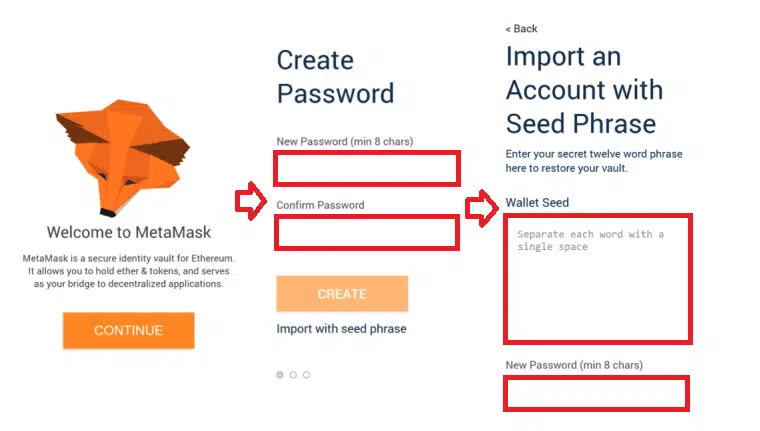
Selecting the [Create a Wallet] segment will let you set a password and save a copy on a physical medium like paper. Setting a secret recovery phrase of 12 random words is also mandatory to complete the wallet setup.
Never save a digital copy of the password or the secret recovery phrase. It includes taking a screenshot and creating a text file. For security purposes, you must type the password whenever you log in to your MetaMask wallet.
Also, there are several other options you can choose for the wallet. We have listed the best digital wallets you can use for crypto transactions. Registering to either of these wallets is simple with two-factor authentication (2FA).
Step Two: Fund the Wallet with Digital Currency
You’ll have to patch a bank account or credit card to the crypto wallet to transfer some fiat currency. Nearly all crypto exchanges support US Dollars. So, transferring USD to the wallet will let you exchange the fiat money for cryptos. Buying cryptocurrency is a must as specific NFT usually requires ETH or wETH.
Here, you have two options: buy directly in Metamask or create an exchange wallet on Binance. We will give you Binance to best equip you on your crypto journey. To create a wallet, click the [Get Started] button.


More details
Binance is a great combination of low fees, deep liquidity and multiple cryptocurrencies and trading pairs. We have tested every aspect of it and it STILL holds its reign as the top exchange in the world. In our view, it is the perfect crypto exchange for both newbies and advanced traders alike.
-
Biggest exchange in the world.
-
Industry's lowest trading fees.
-
Advance trading options like leverage trading.
-
600+ crypto options, 150+ for the US.
-
Lucrative on-site staking options.
-
Hiccups in account verification.
-
Less regulated than some competitors.
-
The corporate structure is not transparently.
Binance Exchange also features a proprietary/embedded NFT marketplace. Also, there are many crypto brokerage facilities to do the trade for you. But you must choose the brokerage carefully to avoid fraudulent NFTs.
An accepted purchase depends on the blockchain network (like the Ethereum blockchain) used to create the NFT. Most NFT marketplaces support Ethereum-backed Ether (ETH) for trades. So, you should exchange the fiat in your wallet for ETH unless you want to buy NFT requiring other crypto assets.

Step Three: Open an Account in an NFT Marketplace
After setting up a wallet and funding it with crypto, you must register to an NFT marketplace.


More details
Binance NFT marketplace, a low-fee platform, enables users to trade various NFTs, including gaming, collectibles, art, and sports. Unavailable for U.S. customers, it's accessed through Binance's primary platform. Overall a great NFT platform recommended for new users.
-
Low trading fees.
-
Big-name collaborations.
-
Gaming NFTs for P2E games.
-
USer friendly.
-
Educational resources
-
Not available in the U.S.
-
Binance's regulatory challenges.
-
Unpredictability for features.
-
Pre-approved creators can mint.
This can be done in two ways:
- Creating an account by providing an e-mail and password or
- Connecting your web 3 wallets.
The registering process differs slightly based on the chosen marketplace.
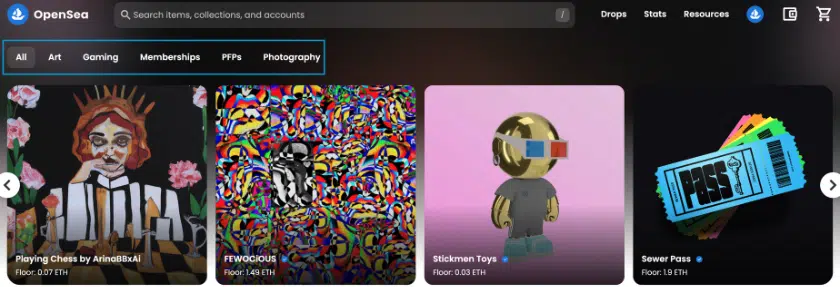
OpenSea, Rarible, Binance NFT, etc., are the most noteworthy marketplaces for NFTs. You should always verify and authenticate your account to keep yourself secure.
Step Four: Connect the Wallet to the Marketplace
Connecting your digital wallet to the marketplace account is essential to trade. Each NFT market has specific wallet requirements for secure transactions. However, patching your digital wallet to the account with the marketplace remains primarily simple.
You are good to go since you made your Metamask earlier in this article.

Step Five: Choose the Token as NFT Buyer
Explore the marketplace for suitable tokens from many NFTs after completing all the account setup steps. Most NFTs listed for sale are at a fixed price or an auction. In either case, you must use the crypto funds to trade.
Browse and navigate the marketplace properly to find your NFTs. Pay attention to the investment potential and payment details of each token. Try to find the prices of related tokens to develop some ideas on the non-fungible asset.
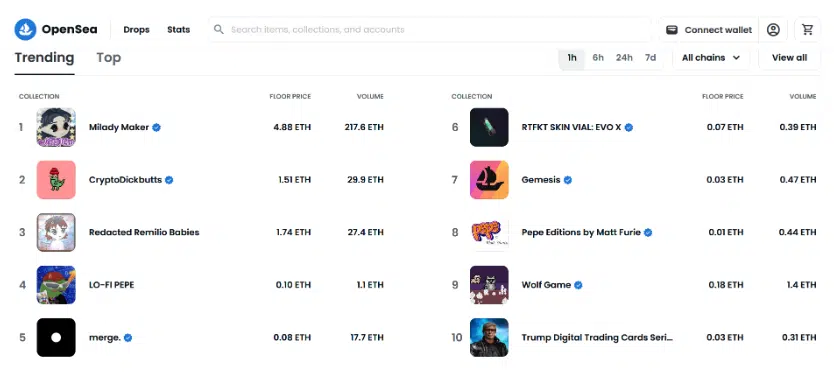
Step Six: Buy the Chosen NFT Using Cryptocurrency
Buying an NFT is as simple as buying a product on Amazon. Hitting the [buy/purchase] button around the chosen tokens will do the job. Only a few marketplaces allow pre-purchase chat/message service with sellers.
The amount will be deducted once buying at fixed prices or bidding an auction becomes successful. It’s an automated process, so you must ensure the wallet has sufficient crypto assets. Otherwise, the process will fail, and you may get penalized.
Also, you should conduct trades with verified accounts only. Many investors are impersonators who enlist NFT sales by using celebrity names. You may get scammed by purchasing fraudulent tokens from them.

Step Seven: Confirm the NFT’s Transfer to the Wallet
Clicking the [buy/purchase] button and signing off the transaction will automatically deduct the amount required for the trade from your wallet. You can see the newly purchased NFTs somewhere on the wallet profile. Congratulations! You are now a proud post-purchase owner of an NFT.
However, completing the trade may take some time after deducting the digital assets. Hence, you may have to wait to see the NFT on your wallet. Once the NFT becomes visible on the wallet, the transaction becomes complete.
Please Note – NFT trades using blockchain technology aren’t reversible. So, you should only buy NFTs after a proper review. The token will remain in your ownership if you don’t sell NFT.
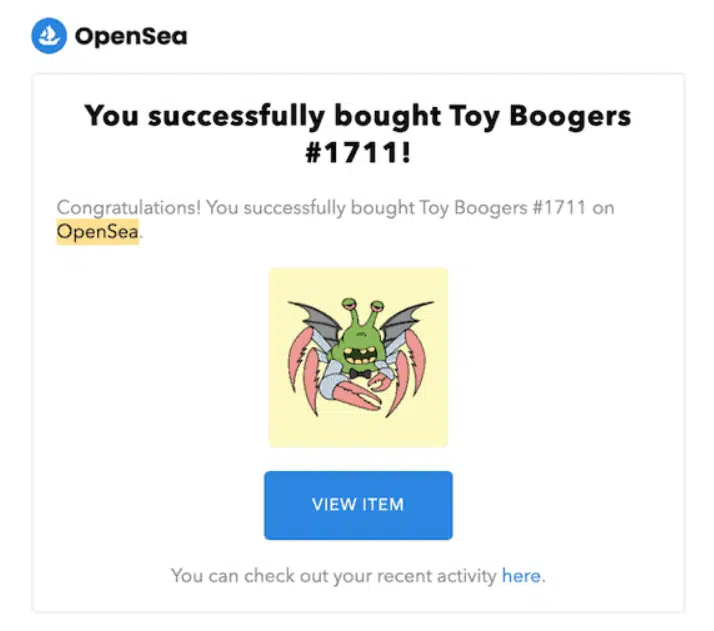
How to Recognize Good NFT Investments?
Non-fungible tokens’ growing popularity keeps attracting more people from other investments. And it makes the investment considerations complex. However, you don’t have to go through everything from the start. Instead, we outlined three of the most critical factors to identify a spot-on-demand NFT worth your investment –
- Utility: The utility of an NFT depends on its applicability in the digital/physical world. NFTs can perform a range of financial as well as non-financial activities. Some NFTs can deliver benefits like exclusive, unique, and early access to certain events. Exceptional use cases mean higher utility, making the token a smart investment.
- Potential: Supply and buyer demand also play a significant role in deciding the NFT’s investment value. Estimation of growth potential is the key to higher profits, even in the digital world. You should choose NFTs in a larger project as it maintains and continues traction. It increases the demand among the customers, pushing the market price.
- Community: Getting involved in an NFT project with a sizeable, active, and engaged community is also essential. Choosing a random NFT from a single project can lose all the value. However, a more extensive project with an active community reduces the chance of scams. Check the community engagement to gauge the potential of NFT projects.
What to Do After Investing in NFTs?
You can continue buying and selling NFTs within the marketplace for short-term profits. Also, you can hold or store NFTs as a long-term investment. It should depend on how much you’re willing to risk and how much you want to profit.
You’re solely responsible for every trade performed through your account. Tracking, recording, and reporting your annual gain on NFTs falls under this obligation. Unfortunately, trading NFTs using cryptos may lead to a capital gain tax.
Therefore, you must report the overall gains on your annual tax return by current laws. NFT taxation is tricky and challenging due to its potential recognition as a collectible. And it may impose as much as a 28% capital gain tax rate.
We recommend Koinly as the go-to tax software for your NFT investments.


More details
Koinly is one of the top leading crypto tax software. It leverages automation to directly import crypto transactions from supported integrations and calculate gains and losses to determine tax implications. Koinly supports more than 700 integrations and is available in over 20 countries and functions using the tax law of the supported countries. The use of Koinly is flexible and also functions as a portfolio tracker, giving an overview of all your assets in one place.
-
Multiple tax reports.
-
Numerous country support.
-
Easy to use.
-
Flexible plans.
-
Wide integration support.
-
Does not accept cryptocurrency payments.
-
Slightly expensive.
How to Sell an NFT?
Whenever you want to sell NFTs, you must list the token for sale by paying a fee. You must ensure the same crypto based on which the NFT was created. These gas fees will let you set a fixed price for a direct NFT purchase or a buyer auction.

The marketplace will handle all the transactions related to the sale, whether direct or auctioned. The assets will be transferred automatically once you sell NFTs to prospective NFT buyers. You may have to wait to see the crypto from selling the NFT on your account.
Pros of NFT Investments
Particular upsides of investing in NFTs created a buzz among interested communities. Some of the most recognized advantages of NFT include the following –
- Uses of Blockchain and Crypto: Investing in NFT means direct exposure to blockchain-based transactions using digital assets. It lets you know and experience the ever-growing adoption of blockchain more effectively.
- Secure and Semi-Anonymous: The transaction process remains incredibly secure throughout your account and wallet. You don’t have to expose personal information or identity while buying or selling.
- Access to Exclusive Merchandise: Investing in NFTs lets you access exclusive events, sales, auctions, and other related merchandise. You’ll learn more about the asset class to grow your investments/profits.
- Opportunity for Further Growth: NFT, a relatively new space, has room for further growth, improvement, and appreciation. Easy transactions remain a superior advantage while trading digital assets like NFTs.
Cons of NFT Investments
However, you should keep the associated downs of NFT investment in mind. Weighing the limits against benefits will let you decide on the investment –
- High-Risk Investments: This high-risk investment doesn’t work like the stock market or physical collectibles throughout the trade. It’s possible to lose the entire value of an NFT, returning no money at all.
- Expensive Network Fees: Registering to a platform, wallet, or service remains free. But nearly all steps to involve a trade will cost you some amount. Significantly large transactions and extended holding mean more network fees added to the investment cost.
- Too Many Scams/Frauds: Even the most secure platforms can’t deny the potential presence of scams and frauds. They can wipe out a significant amount, manipulate values, or even discard NFTs.
Wrapping Up: Should You Invest in NFT?
NFTs are digital assets with superior potential and further growth. Investing in NFT is initially a simple process as it involves setting up accounts, connecting the wallet, and transferring the assets. But it becomes complex with the NFT’s purchase with all the trading fees and high volatility.
Making the investment profitable requires proper consideration, approach, and knowledge. And it’ll take some time to get used to the turbulent digital asset market. If you’re willing to pay the gas fees, understand the risks, and cover the potential loss – you can confidently invest in NFTs.
Beginners mostly find NFT investments somewhat challenging to navigate. You may have to seek additional help to keep up with the risks. Still, you should start small to learn, grow, and eventually expert NFT markets.
NFT's price can range from free to millions of dollars without transaction fees. You can start investing with free to merely priced ones as a beginner. Knowing essential factors can help you gain positive returns even on smaller investments.
There's no hard and fast rule to make a good profit out of an NFT investment. Considering all the upsides and downsides with costs/fees and trends can give you a head start. Taking a balanced approach is always the key.











